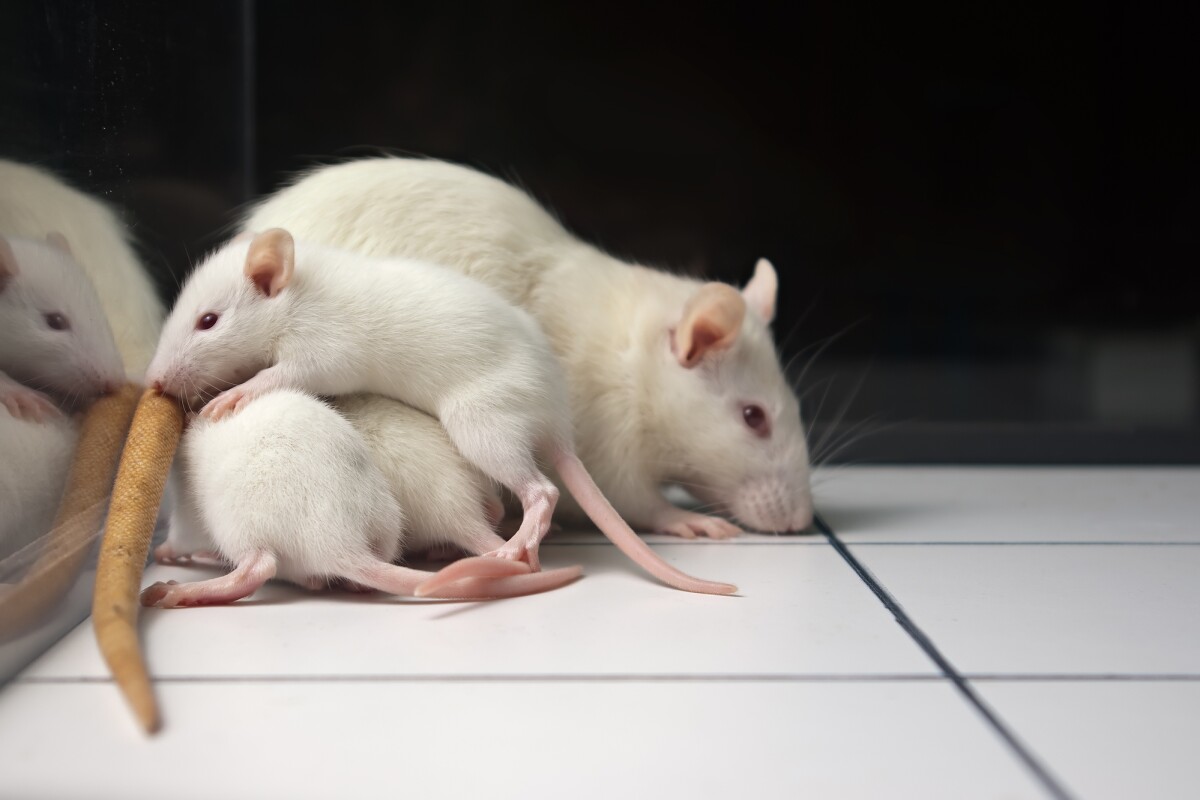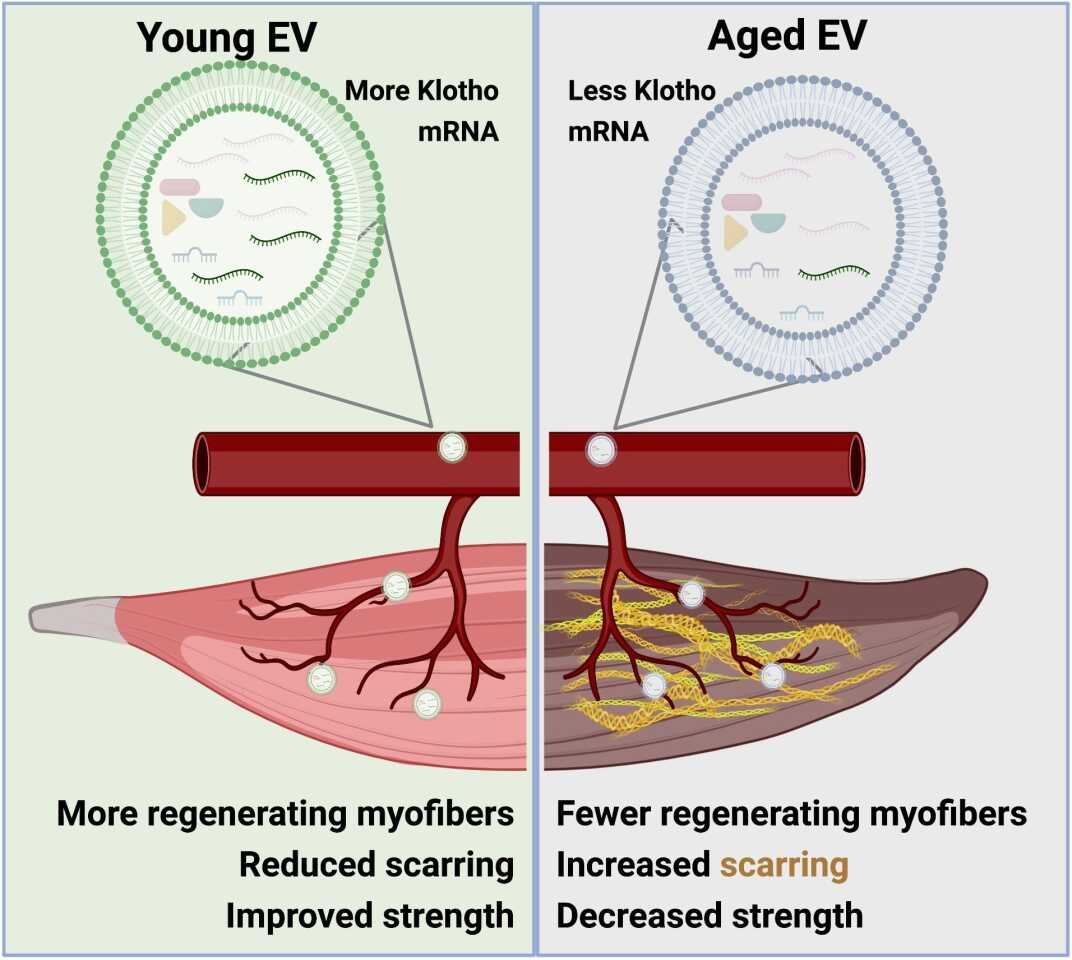
We are describing the bodies own elixer of youth that restores health after damage. The loss of this capacity explains aging as well.
This will surely lead to superior supplements and other therapies as well.
It also explainsc why robust physical training programs are actually counter productive as we age. This holds for even those in their prime. Recovery really matters and a deficiency of recovery power is not good.
"Young blood" particles that help old mice fight aging identified
December 09, 2021
A new study has identified a specific component of young blood that helps older mice rejuvenate muscle
https://newatlas.com/medical/anti-aging-young-blood-particles/
It sounds like gothic horror, but studies have shown that giving elderly mice transfusions of blood plasma from younger mice can rejuvenate their cells, reversing some of the effects of aging. In a new study, researchers from the University of Pittsburgh have identified a specific component of young blood that improves muscle repair function lost with time, potentially leading to new anti-aging therapies.
As animals age, their metabolism slows and many cellular repair functions lose their effectiveness, resulting in the declining health and physical strength we associate with old age. So the thinking was that transfusions of blood from the young could help restore a youthful vitality in the old.
In 2014 a team tested that very idea, administering injections of plasma from young mice into older ones and finding that the treated elders performed better at spatial memory tasks than untreated animals. Later studies identified specific proteins in young blood and plasma that increase lifespan or slow the progression of cognitive decline in Alzheimer’s disease.
And now, a new mechanism has been uncovered. The Pittsburgh team zeroed in on extracellular vesicles (EVs), lipid-based particles that carry proteins and other molecules between cells. The researchers investigated EVs that seemed to play a role in muscle repair, a function that declines with age.
“We wondered if extracellular vesicles might contribute to muscle regeneration because these couriers travel between cells via the blood and other bodily fluids,” says Amrita Sahu, lead author of the study. “Like a message in a bottle, EVs deliver information to target cells.”
First, the team collected blood serum from young mice and injected it into aged mice that had muscle injuries. As expected, the treated mice showed greater muscle regeneration capacity, regrowing larger muscle fibers and gaining more strength, than mice that received a placebo. But the kicker came when EVs were removed from the serum, and the restorative effects vanished with them.
A diagram illustrating how EVs carrying mRNA for the muscle-regenerating protein Klotho differ in mice of different age groups
The cargo of the EVs is the important factor. On closer inspection the team found that these EVs were transporting mRNA that encodes for a protein called Klotho, which is a regulator of regeneration in muscle stem cells. EVs from young mice carried more copies of Klotho mRNA than those from old mice, so a transfusion of young EVs enabled the muscles of older mice to rebuild better.
While it’s still early days, having only been tested in mice so far, the team says that this discovery could eventually lead to new treatments for aging-related frailties or injuries.
“EVs may be beneficial for boosting regenerative capacity of muscle in older individuals and improving functional recovery after an injury,” says Fabrisia Ambrosio, senior author of the study. “One of the ideas we’re really excited about is engineering EVs with specific cargoes, so that we can dictate the responses of target cells.”
The research was published in the journal Nature Aging.

No comments:
Post a Comment